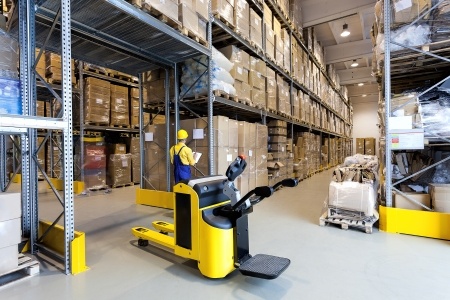Improving the productivity of a warehouse has never been more possible due to advances in technology. Let’s explore some of the tools available to warehouse managers to maximize productivity in the five warehouse management processes described below.
1. Collaboration
Communication by email is a great communication tool, however, when it comes to time-sensitive communication; direct contact is much more efficient. Make use of one or more of the wireless technologies available to increase your productivity. A key in selecting technologies is that they must integrate and work together. Whether you choose to communicate through radio, laptop or smartphone, invest in a system that all departments can use consistently. This will give your warehouse real-time efficiency and improve productivity.
2. Receiving
Handle it once. The more times an item is handled and the more individuals involved in the handling, the more time and money you are wasting. Materials must be received and stored with total accuracy. Your database for inventory must be updated as merchandise is received.
Having one person in receiving checking off received materials from a list, then sending the materials for stocking, then sending the list for database updating is not efficient. Inbound processing and the right manufacturing Enterprise Resource Planning (ERP) software can allow one individual to check in materials and record the inventory in one step. Those materials can then be routed to the correct location in your warehouse.
Select a system of barcode scanning or RFID and take the extra handling out of your receiving operations. This system will also allow the data from incoming shipments to be sent directly to the purchasing and AP departments to update the information for timely payments of invoices.
Just-in-time delivery is a method for keeping excess inventory from building up in your facility. The more material you have just sitting on shelves, the more money you have tied up in that inventory.
3. Inventory Layout
The organization of your warehouse is extremely important since it determines how efficiently new materials are put away and items are retrieved for shipment. Invest in a storage system that meets the needs of your facility. Your layout should be designed according to your unique operations. If certain items are ordered and shipped together, that is how they should be stored. If a numerical system works best, then that is the system to use.
If your materials are stored on pallets, have the right system in place for easy pallet access. If you use bins, have the racking system to accommodate them. The better your material organization and access, the less time you lose in preparing orders for shipment.
The critical thing to keep in mind is that workers should not have to make several trips around your entire facility to pick orders for shipment. The more time employees spend while traveling around inside your facility, the more productivity that you are losing.
4. Picking procedures
Picking and packing are another area where otherwise efficient warehouses can quickly fail. If the wrong materials are pulled, someone not only has to retrieve the correct merchandise, but also the wrong items must be returned to where they belong.
When your stock is organized and marked with (for example) SKUs or a different system, your employees will be less likely to pull the wrong materials for shipments. With the right software, you can combine pick lists to complete several orders and then sort the individual items directly in your shipping department.
5. Loading and Shipping
When it comes to loading and shipping, first in is not first out. Trucks must be loaded in the reverse order. The last items placed in the truck will be the first items unloaded.
GPS systems can help you optimize your loading, routing and deliveries. This last step will help you ensure customer satisfaction. You will know where shipments are if customers have questions.
Make use of the organization, communication, storage and software solutions available to keep your warehouse operations up to date. These implementations will improve your productivity, reduce errors and improve the bottom line for your facility.
If you liked this post, there here are others you may also find interesting:
